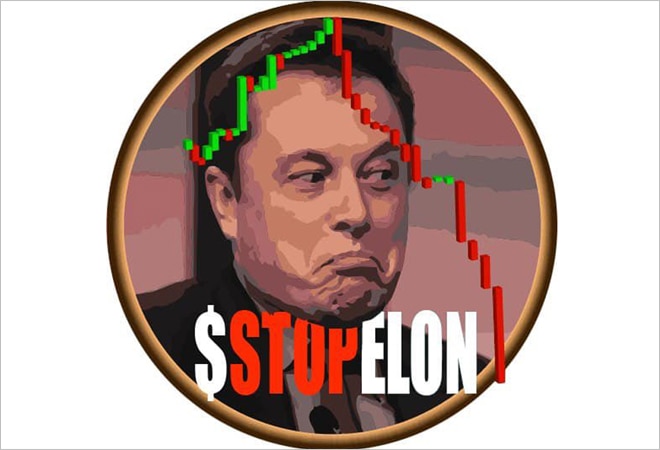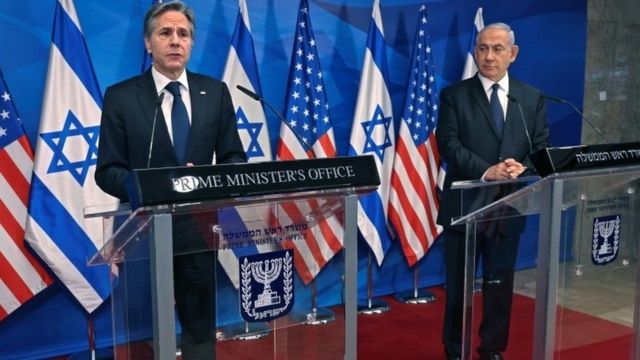How Elon Musk Became Spaces Top Entrepreneur With Spacex And Starlbuck cofee

How Elon Musk Became Spaces Top Entrepreneur With Spacex And Starlink
SpaceX owner and Tesla CEO Elon Musk (R) gestures as he arrives on the red carpet for the Axel Springer Awards ceremony, in Berlin, on December 1, 2020. (Photo by Britta Pedersen / POOL / AFP) (Photo by BRITTA PEDERSEN/POOL/AFP via Getty Images) BRITTA PEDERSEN/POOL/AFP via Getty Images
https://jwoodard.instructure.com/eportfolios/706/Home/_2021Once_Upon_a_Time_in_Hong_Kong4K
https://peirce.instructure.com/eportfolios/18190/Home/_HD_Fast__Furious_9_THE_FAST_SAGA_ZH4K
https://peirce.instructure.com/eportfolios/18190/Home/Fast__Furious_9_THE_FAST_SAGA_2021HK94K
https://peirce.instructure.com/eportfolios/18190/Home/9Fast__Furious_9_THE_FAST_SAGA20219HD
https://canvas.laurea.fi/eportfolios/28886/Home/_9__Fast__Furious_9_THE_FAST_SAGA_2021HD
For a long time, private space exploration was stuck perpetually five to ten years in the future. News stories about space planes and consumer trips into orbit or to the Moon made headlines but were never realized. For a while, it seemed like every billionaire on Earth was creating their own space exploration company set on revolutionizing off-planet exploration. When Elon Musk entered the scene, there was little reason to believe he would be any different. Claims of lowering costs and colonizing Mars invited skepticism; we’d heard them all before.
Musk is a sometimes-controversial figure. His comments have landed him in hot water with both the public and government entities. Love him or hate him, he knows how to bend markets to his will and, 20 years since the genesis of his company SpaceX, Musk has done what many in the private sector could not, making good on his original promises. To date, SpaceX has flown regular supply missions to the International Space Station, perfected reusable rocket boosters, and even delivered astronauts to space and returned them safely home. Building on these successes, the company has its sights set on larger goals, namely putting boots back on the Moon and, eventually, Mars.
The Early Days
The origins of Musk’s success can be glimpsed in his childhood. At twelve, he programmed a video game called Blastar and sold the code to the magazine PC and Office Technology for $500. The game itself, which you can play here, plays like a simplified version of Space Invaders. Where it shines is as an early example of Musk’s knack for monetizing his skillset and investing those gains in future ventures. Musk said in an interview “I learned that if I wrote software and sold it, then I could get more money and buy better computers,” which reads like a playbook for the rest of his life.
Musk moved to the United States and attended the University of Pennsylvania where he earned degrees in both economics and physics, an education seemingly tailor-made for his future with SpaceX. He was then accepted into Stanford’s Ph.D. program but only attended for two days before dropping out to pursue ventures in Silicon Valley.
In the mid-‘90s, while the internet was in its early stages, Musk, along with his brother Kimbal, created a software company called Zip2. The company, which provided online city guides, was eventually bought by Compaq for $305 million in February 1999. Elon pocketed $22 million.
With a newly amassed fortune in hand, Musk zeroed in on the next venture: the financial industry. Money is, for the most part, just numbers in a database, and Musk recognized the opportunity to innovate the way payment transfers were handled by utilizing the internet. In March 1999, only a month after the sale of Zip2, he co-founded an online banking company called X.com.
At the time eBay, with its built-in payment portal, was the biggest player in online payments. X.com intended to supersede them but was butting up against another competitor: Confinity. In order to better compete against eBay, the two companies merged to become PayPal. Two years later, eBay would purchase PayPal for $1.5 billion. Musk pocketed $165 million.
By this time, Musk had already set his sights on the stars. His original intent was to reignite public interest in space exploration in order to boost NASA’s budget. The plan was to accomplish this via an experiment dubbed Mars Oasis, a small greenhouse launched to Mars, carrying crop plants to be grown on Martian regolith.
Musk traveled to Russia, hoping to purchase the rockets he would need to send his payload to the red planet, but the process turned out to be more difficult than he’d envisioned. Talks dissolved as the Russians saw Musk as an amateur with one meeting reportedly ending with spittle flying. Eventually, he was offered a missile at a cost of $8 million, but Musk found the offer too steep and walked out. On the flight home, Musk calculated the cost of building rockets and realized the cost would be a fraction of offered purchase prices.
Finding the process of working with existing entities to procure rockets too cumbersome, Musk did what he’d always done, started a company of his own. If he couldn’t buy rockets, he’d just build them himself.
Elon Musk, the co-founder of SpaceX, a private space exploration company based in Hawthorne, CA, watches the liftoff of Falcon1 rocket from Omelek Island in the Kwajalein Atoll located 2,500 miles southwest of Hawaii, September, 29, 2008. Axel Koester/Corbis via Getty Images
In 2002, Space Exploration Technologies Corp., or SpaceX, was born. They set up shop on Omelek Island, in the Pacific Ocean and got to work. Musk invested $100 million of his personal fortune into the company, giving them enough money for three launches of what would become their Falcon 1 rocket, but those three launches failed. Within days of the third failure, Musk announced he’d identified the problem and secured funding for one final attempt.
That flight would make or break SpaceX, either they’d reach orbit, or they’d shutter operations. On September 28, 2008 the fourth flight of Falcon 1 reached orbit, making SpaceX the first privately funded company to design a vehicle and successfully launch to orbit.
Despite the recent success, SpaceX was in a dire position. The company had proven the efficacy of its technology but had used up all of its funds to do so. The United States had also just entered the biggest economic recession since the Great Depression. SpaceX needed more funding, and fast. That’s when NASA stepped in.
Just before 2008 closed out, NASA awarded SpaceX a $1.6 billion contract to fly supply missions to the International Space Station as part of their Commercial Resupply Services program. With the financial future of the company on steadier ground, SpaceX set about making good on its promise of lowering the cost to launch.
See Also: Elon Musk Reveal’s SpaceX’s Timeline for Landing Humans On Mars
The Falcon 1, so named because of its single engine, had only one more flight in July of 2009, when they sent Malaysian observation satellite RazakSAT into orbit. The next step in the company’s plans involved a more powerful machine. There was talk of developing Falcon 5, but it was passed over in favor of the Falcon 9. Why split the difference when you can go the distance?
The larger rocket, consisting of nine clustered engines in its first stage, would be capable of delivering much larger payloads, like those needed for the contracted ISS supply missions. And it worked. To date, Falcon 9 has made more than 100 successful flights, dozens of those heading to ISS.
Recently, Falcon has also flown astronauts, first sending two astronauts as a part of the final test mission, and later a crew of four, making SpaceX the first commercial company to fly crewed missions. It also had the consequence of returning crewed flight capability to U.S. soil, something which hadn’t been possible since the end of the Shuttle program, nearly a decade ago.
CAPE CANAVERAL, FLORIDA – MAY 30: Elon Musk (R) after the successful launch of the SpaceX Falcon 9 rocket with the manned Crew Dragon spacecraft at the Kennedy Space Center on May 30, 2020 in Cape Canaveral, Florida.
The cost of these flights is considerably cheaper than previous programs, too. Flights of the Falcon 9 sell for about $62 million, with a payload capability of 22,800 kilograms, working out to about $2,700 per kilo. By comparison, the Shuttle had a per-kilo cost of more than $54,000.
In just 18 years, SpaceX went from being an idea to one of the most well-known entities in space exploration. And they show no signs of stopping.
Innovation
If SpaceX had only designed their own rockets and successfully flown cargo and crew into orbit, that would have been enough. But Musk didn’t set out just to break into an established industry; shaking things up is what he does and space exploration is no exception.
The most obvious way to do this, in Musk’s eyes, was rethinking the way we deal with our rockets. He’s commented, over the years, at what he calls the absurdity of single-use rockets. “You can imagine if planes were not reusable, very few people would fly. A 747 is about $300 million, you’d need two of them for a round trip,” he once said. “Yet, I don’t think anyone here has paid half a billion dollars to fly. The reason is those planes can be used tens of thousands of times.”
Musk imagines a space industry built on the same philosophy. For decades, rockets were flown once and discarded, fated either to burn up in the atmosphere or crash into the ocean. Or, as is the case with at least one Apollo-era rocket, drifting in orbit for nearly fifty years. SpaceX aimed to change that by making its rockets reusable.
The first plan was to use parachutes, but those experiments proved unsuccessful. Instead, SpaceX shifted focus to powered descent. In 2015, it successfully landed a spent first-stage rocket on the ground. Recovering the rocket drastically reduces the cost of launch. The cost of fuel is one of the smallest costs for launch and while some maintenance is needed between launches, significant cost reduction is realized as a result of not having to build the rocket all over again.
AS of March 2020, SpaceX had successfully recovered a booster 50 times. Since then, NASA has approved the reuse of both Falcon rockets and Dragon capsules for crewed missions.
Having proven its ability to launch consistently, SpaceX is pushing into bigger and more complex launch vehicles. These updated crafts are designed with the ultimate intent of returning humans to the Moon and eventually, to Mars.
Falcon Heavy builds upon the successful Falcon 9 design by incorporating a strengthened Falcon 9 first stage with two additional Falcon 9s strapped to the sides. This vehicle has the ability to carry a much larger payload and is just the sort of thing needed to launch SpaceX’s Starship and ferry crews to other worlds.
The Falcon Heavy’s maiden flight took place in February 2018, carrying a Tesla Roadster into orbit, along with a dummy dubbed Starman. Musk’s penchant for pop-culture references can’t be denied. Its second flight was also successful, with all three boosters returning to Earth.
The Falcon Heavy isn’t the endgame though, but merely a stepping stone to an even larger vehicle dubbed Super Heavy, which SpaceX plans to use in launching its Starship to the Moon, Mars, and other distant locales.
A recent test of a Starship prototype reached an altitude record and successful

Supreme Court Holds Off Ruling on Trump Plan to Block Immigrants From Census Count
- Supreme Court Holds Off Ruling on Trump Plan to Block Immigrants From Census Count

Can Martin Schulz succeed where Sanders and Corbyn failed? withstood
- Martin Schulz is not your average candidate for Chancellor.<br><br>But on September 24, the votes of

The United States has pledged to help rebuild Gaza after it was devastated
- The United States will help rebuild Gaza as part of efforts to consolidate a ceasefire between Israel and Palestinian militant groups
.jpg)
Verified (2020) VMware 5V0-33.19 Dumps Pdf Real Questions & Answers
- CertsLeads enables you to prepare your certification exams, Get most actual and updated exam questions PDF for passing the certifications exam in first attempt